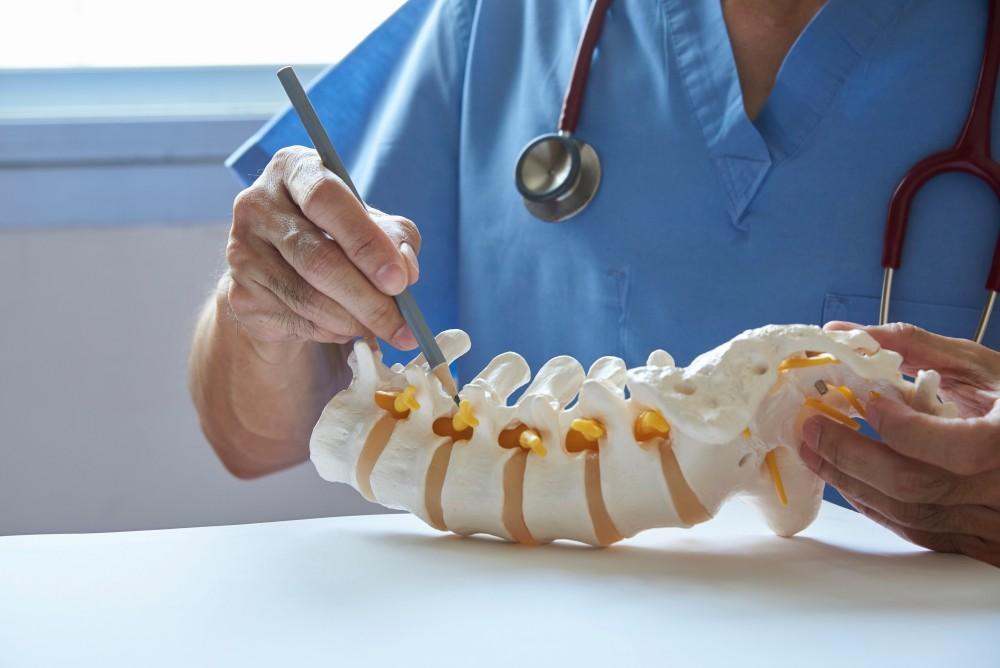
Using Your Own Platelet-Rich Plasma to Alleviate Your Back Pain

Back pain is a common problem that can range from an annoying ache to unbearable distress. It can disrupt your daily routine, make you miss work, and lower your quality of life.
Back pain is the second most common reason people go to the doctor, right after the common cold. Around 80%-90% of people in the United States will develop back pain at some point during their lives.
Most cases are short-lived and improve with at-home care, but some people struggle with severe back pain or symptoms that won’t go away. You should seek medical attention for any back pain lasting more than a few days, especially if it’s severe or accompanied by other symptoms like numbness, tingling, or weakness.
At Vertrae®, board-certified neurosurgeon Dr. Kamal R. Woods routinely deals with back pain in patients at the Dayton and Springfield, Ohio, offices. How he decides to treat the problem depends on a great many factors, including the underlying cause, the severity of the symptoms, and how much it’s interfering with your life.
One treatment he uses, either alone or in conjunction with others, is platelet-rich plasma (PRP) therapy, a relatively new option gaining traction in the medical community. Here’s what it involves.
The spine
Your spine contains 24 bony vertebrae held together in a column by facet joints. Between each pair of vertebrae, an intervertebral disc cushions the bones and absorbs the shock from bending, twisting, or walking. Muscles, tendons, and connective tissue support the entire column and keep it stable so you can move without impediment.
Inside the column lies the spinal canal, through which the spinal cord and related nerves run. They then head out through openings between the vertebrae (foramina) to the peripheral parts of the body.
Causes of back pain
Back pain can occur due to problems in any area of the spine or its components. Some of the most common causes of back pain include:
- Sprain: injury to a ligament (connects bone to bone) that supports the spine
- Strain: injury to a muscle or tendon (connects muscle to bone)
- Degenerative disc disease: dehydration of discs, impairing their ability to cushion due to aging
- Herniated or ruptured discs: disc or disc material protrudes into the canal, compressing and irritating nerves
- Spondylolisthesis: The vertebra in the spine moves out of alignment
- Spinal stenosis: a narrowing of the spinal canal that puts pressure on the spinal nerves
- Scoliosis or other congenital changes to the spine
- Myofascial pain: tightness and pain of the muscles supporting the spine due to damage or faulty nerve input
- Ankylosing spondylitis: a form of inflammatory arthritis
- Osteoporosis: loss of bone density that leads to compression fractures
Dr. Woods uses a variety of diagnostic tools, from X-rays to MRIs to nerve conduction tests, to determine the exact cause of your problem.
Treating back pain
Most back pain can be resolved with over-the-counter pain relievers, anti-inflammatories, rest, and targeted physical therapy. Bed rest is not recommended, as it will likely make the pain worse. Sometimes, a prescription painkiller or muscle relaxant is needed.
Other options include cortisone injections, radiofrequency ablation to interfere with pain signals to the brain, implanted nerve stimulators, and surgery.
Dr. Woods always starts with conservative treatments, reserving invasive procedures to use as a last resort.
How PRP may alleviate back pain
PRP is a type of regenerative medicine, meaning it may help your body heal and regrow damaged tissue. With PRP therapy, the doctor draws a blood sample from your arm, spins it at high speed in a centrifuge to separate the platelets from the other blood cells, and then injects the watery plasma into the treatment area. The platelets in the plasma trigger tissue healing and growth.
A 2019 Journal of Pain Research review highlighted studies suggesting PRP could restore both structure and function in spines affected by disc degeneration. In 2017, Asian Spine Journal published the results from a preliminary clinical trial of 14 people with chronic low back pain and some evidence of disc degeneration. After receiving PRP, all participants reported less pain both one month and six months later.
However, most studies of PRP’s benefits were done in animal models, so it’s difficult to draw firm conclusions that it would benefit humans in the same way; more human trials are needed to prove its effectiveness. Nevertheless, early human research is promising, primarily for back pain stemming from disc degeneration.
If you’re struggling with back pain, Vertrae® can help. Call our office at 844-255-2225 or book online today to schedule an evaluation with Dr. Woods.
You Might Also Enjoy...


How to Alleviate Chronic Back Pain Without Surgery

5 Common Signs of a Compression Fracture

A Closer Look at Your Sacroiliac Joint

4 Benefits of Outpatient Spine Surgery

